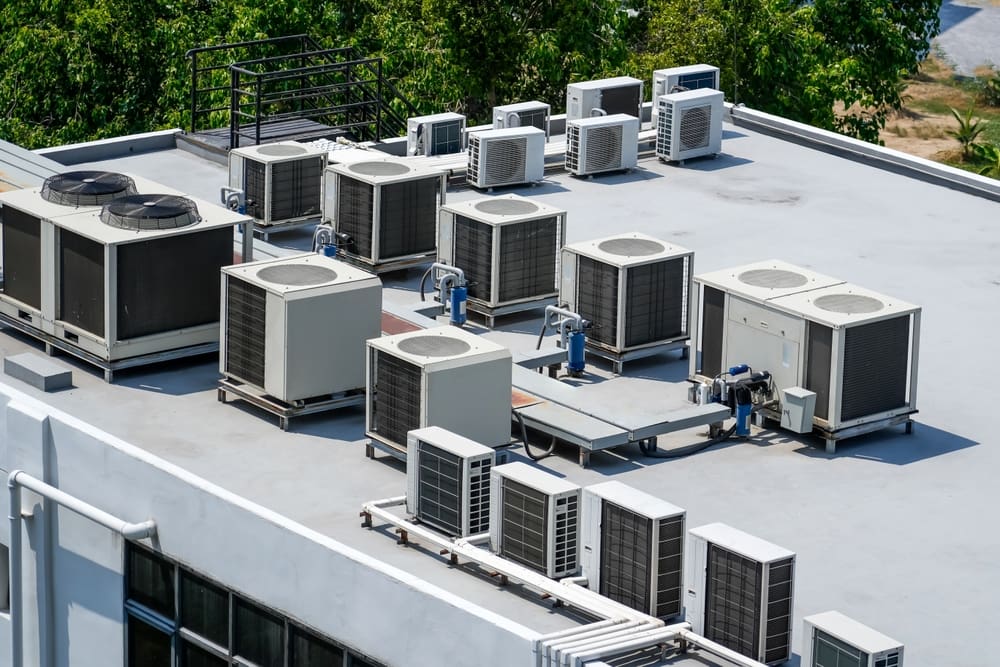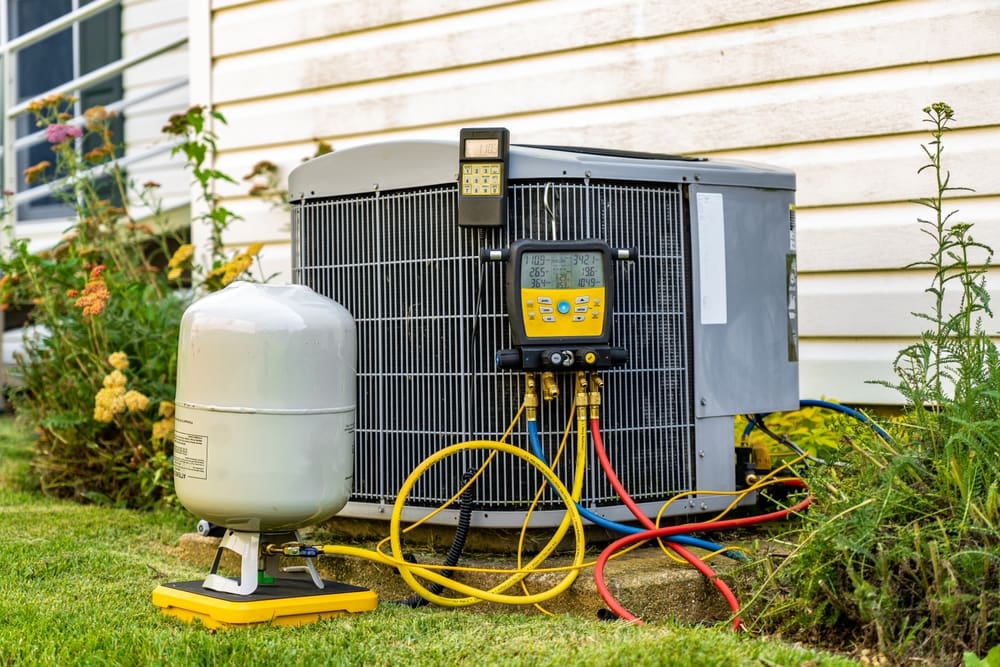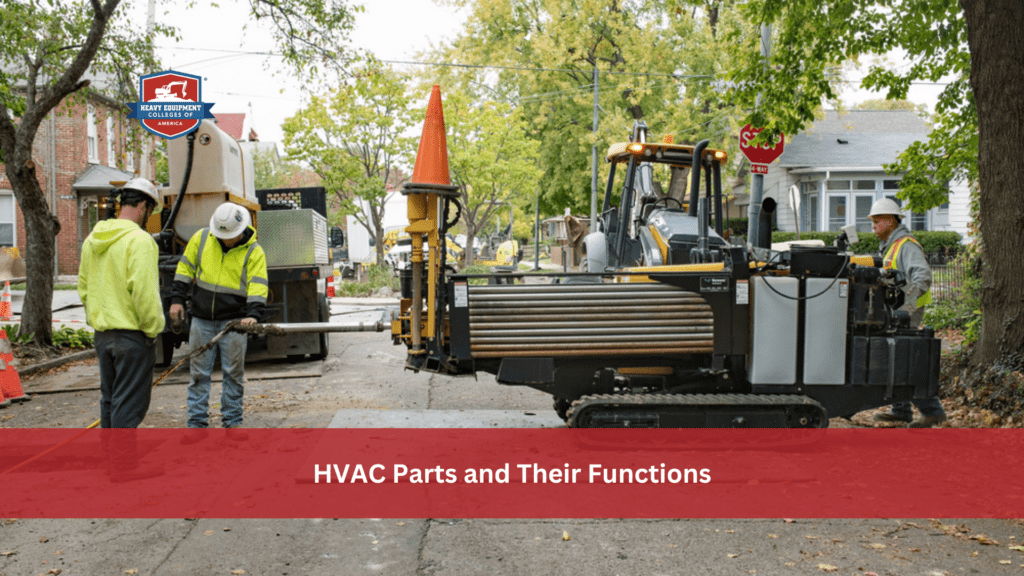Heating and cooling is something that many people take for granted but would not want to live without in the middle of summer or the dead of winter. However, an HVAC system is more than just blowing hot or cold air around in your home. This system consists of a ton of moving parts that all have to work together to safely and efficiently heat up or cool down your space.
Interested in HVAC systems but not sure how they work? Do not fret, we are here to help. In this post, we will go over the basics of what an HVAC system is, how it works, the key HVAC components and what they do, as well as the basics of how to take care of an HVAC system.
Table of Contents
What Is An HVAC System And How Does It Work?
In short, an HVAC system is an intricate web of different parts that work together to regulate indoor temperatures, air quality, and humidity levels. A furnace creates heat to keep you toast in the winter, and an air conditioning unit creates cool air to keep you comfortable during the summer. In addition, filters in the duct system collect dust and other contaminants before they cycle through the home, improving air quality and reducing allergens in the air.

Key Parts of HVAC Systems
Now that you know what an HVAC system is, what is the next step? If you want to become a heating and air technology technician, or you are just curious about how HVAC systems work, it is important to know the key parts of an HVAC system as well as the function of HVAC parts. We will briefly go over the 13 main parts of any HVAC system as well as what they do and how they work.
1. Air Conditioning Unit
The air conditioning unit is what draws in warm air from your home and cools it off before sending that cool air back into your home. This helps to keep your home comfortable in the summer while maintaining your desired temperature.
2. Heat Exchanger
As the name suggests, the heat exchanger is a liquid-filled chamber that helps to transfer heat from one place to another. This can be from the outside into your home, or the other way around, and it helps to keep your home warm during the winter.
3. Thermostat
The thermostat is like the brain of your HVAC system. It controls the temperature that your home needs to maintain, and it uses that information to signal when the heat or air conditioner needs to turn on to maintain that set temperature.
Why It’s Important to Hire Licensed HVAC Technicians
This post will go over what an HVAC technician does, why you should hire a professional to work on your heating and cooling systems.
4. Blower Motor
The blower motor is what pumps the warm or cold air from your HVAC units throughout your home.
5. Air Ducts and Vents
The air ducts and vents in your HVAC system are what transfer the hot or cold air produced from your furnace or air conditioner to the rest of your home.
6. Furnace
Opposite of the air conditioning unit, the furnace draws in cold air from your home and warms it up using a series of burners and coils. This warm air is then pumped into your home, keeping you nice and toasty during the winter.
7. Evaporator Coil
The evaporator coil cools off the warm air that comes into your air conditioner. The warm air travels over the coils, and the refrigerant inside of the coils absorbs the heat and cools off the air before it is sent back into the rest of your house.
8. Condenser Coil
The condenser coil is a part of the outdoor air conditioning unit that releases the heat that was trapped by the evaporator coils. This heat is released into the air outside of your home so your house remains cool in the summer.
How Long Is HVAC Training at HEC?
Our Heating and Air Technology program can be completed in as little as 7 weeks. Upon program completion, students are prepared to earn their HVAC certification and enter the workforce.
9. Electrical Elements
The electrical elements of your HVAC system ensure proper safety, control, and operation of your unit. These can include the thermostat, capacitors that store energy for fan motors, and compressors.
10. Refrigerant
Refrigerant and refrigerant lines are what cool off the air in your home and transfer the refrigerant between the indoor evaporator coil and the outdoor condenser coil.
11. Fan
Fans help move both warm and cool air throughout your home and distribute it evenly to maintain the set thermostat temperature. Both your heating and cooling systems use a series of fans to move air around.
12. Compressor
Inside the condenser unit is the compressor, which compresses refrigerant vapors. It does this so that there is an increase in pressure and temperature in the condenser, improving the energy efficiency of your HVAC system.
13. Expansion valve
The expansion valve sits between the condenser and the evaporator, and its job is to allow the refrigerant in your air conditioner to expand into a gas and therefore absorb more heat.

How To Take Care Of Your HVAC System?
- Having regular maintenance performed: Routine maintenance and check-ups for your HVAC system can help to catch issues early on before they become more serious. These appointments should be scheduled around twice a year, checking your air conditioning in the spring and your heating in the fall.
- Changing air filters: The air filters in your HVAC system should be replaced every 6 weeks, or earlier if you start to notice an increase in dust or dander in your home.
- Clearing the area around your AC condenser: Since the condenser is outside of your home, it is important to make sure that the area around it is clear of any debris such as leaves or snow. This ensures that the unit has proper ventilation and airflow to circulate air properly.
- Calling a Professional HVAC Technician: Lastly, if you notice that something is wrong with your HVAC system and you do not feel comfortable or confident dealing with it on your own, do not hesitate to reach out to your local HVAC company and schedule an appointment with a licensed technician.
Start Your Career in Skilled Trade Industry
Do you have an interest in working in the skilled trade industry, specifically working with HVAC systems? Whether you are fresh out of high school or looking for a career change, the Heavy Equipment Colleges of America’s Heating and Air Technology School in Oklahoma is the place to start. Our extensive program will give you the knowledge and skills to gain an entry-level position with an HVAC company. Once you complete our program, you will be ready to ace Oklahoma’s HVAC certification exam and work in the state of Oklahoma as a certified HVAC technician!
Interested in joining the HVAC certification program at Heavy Equipment Colleges of America? Contact us today or visit our website to learn more about our Heating and Air Technology Program in Oklahoma. We are more than excited to help you begin your career in the HVAC industry, and we will walk with you through every step of the process to set you up for success.

